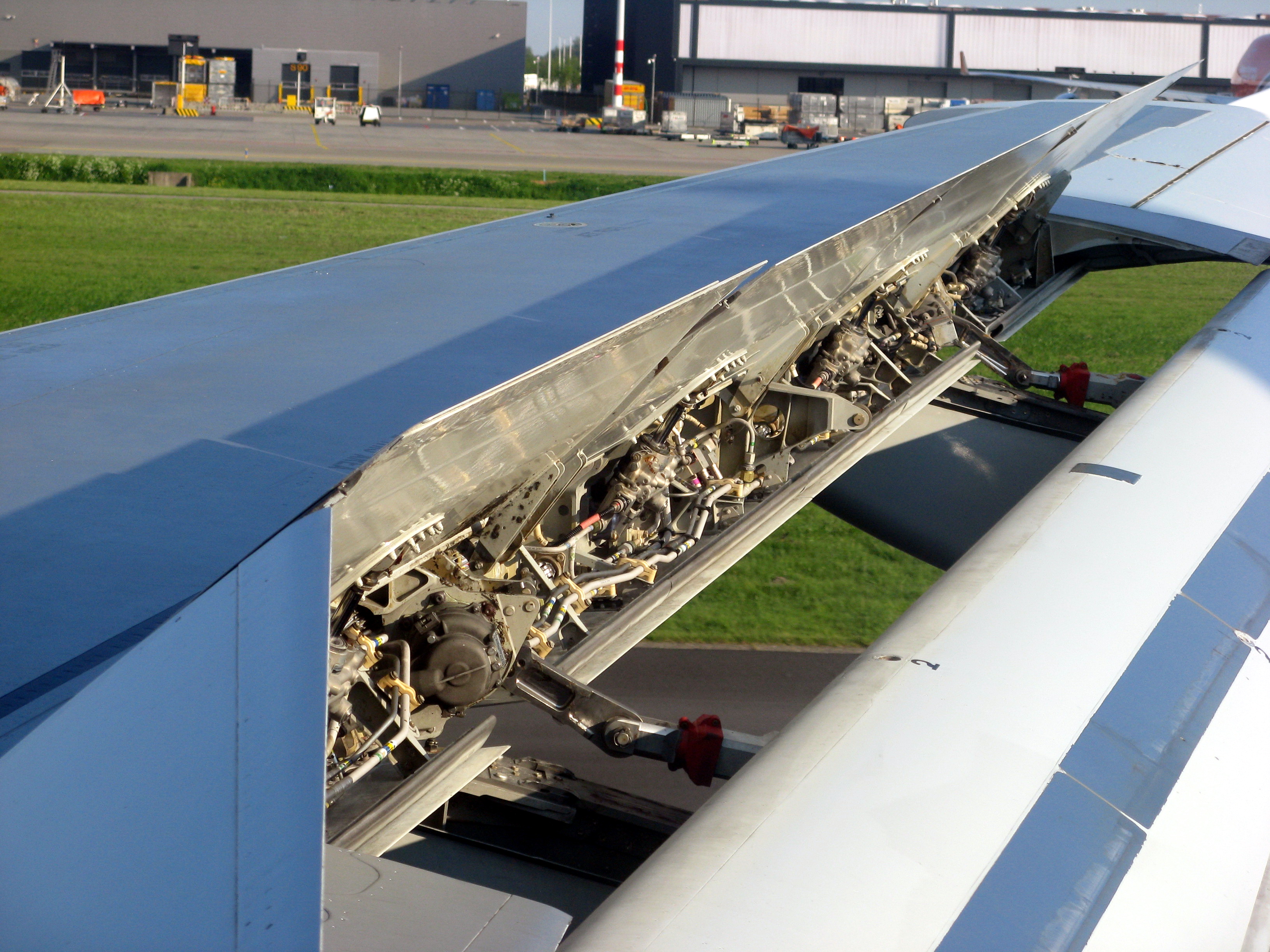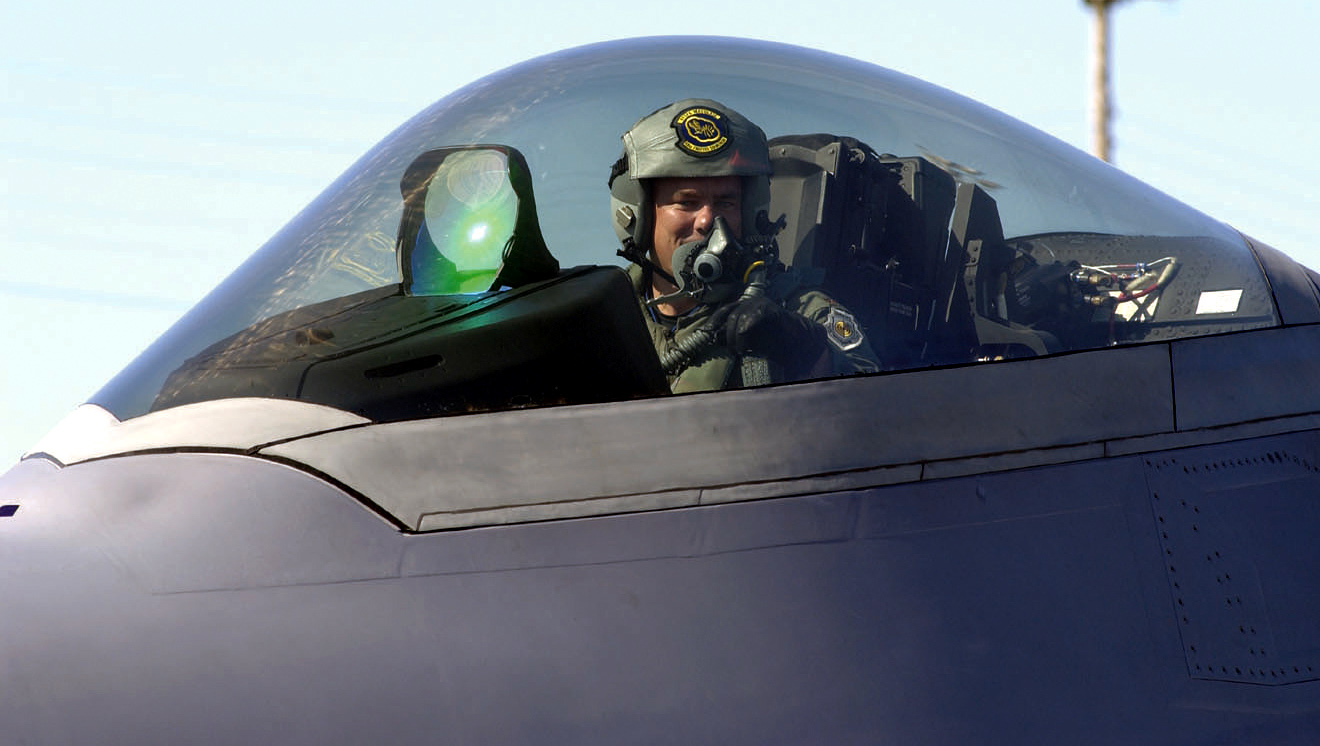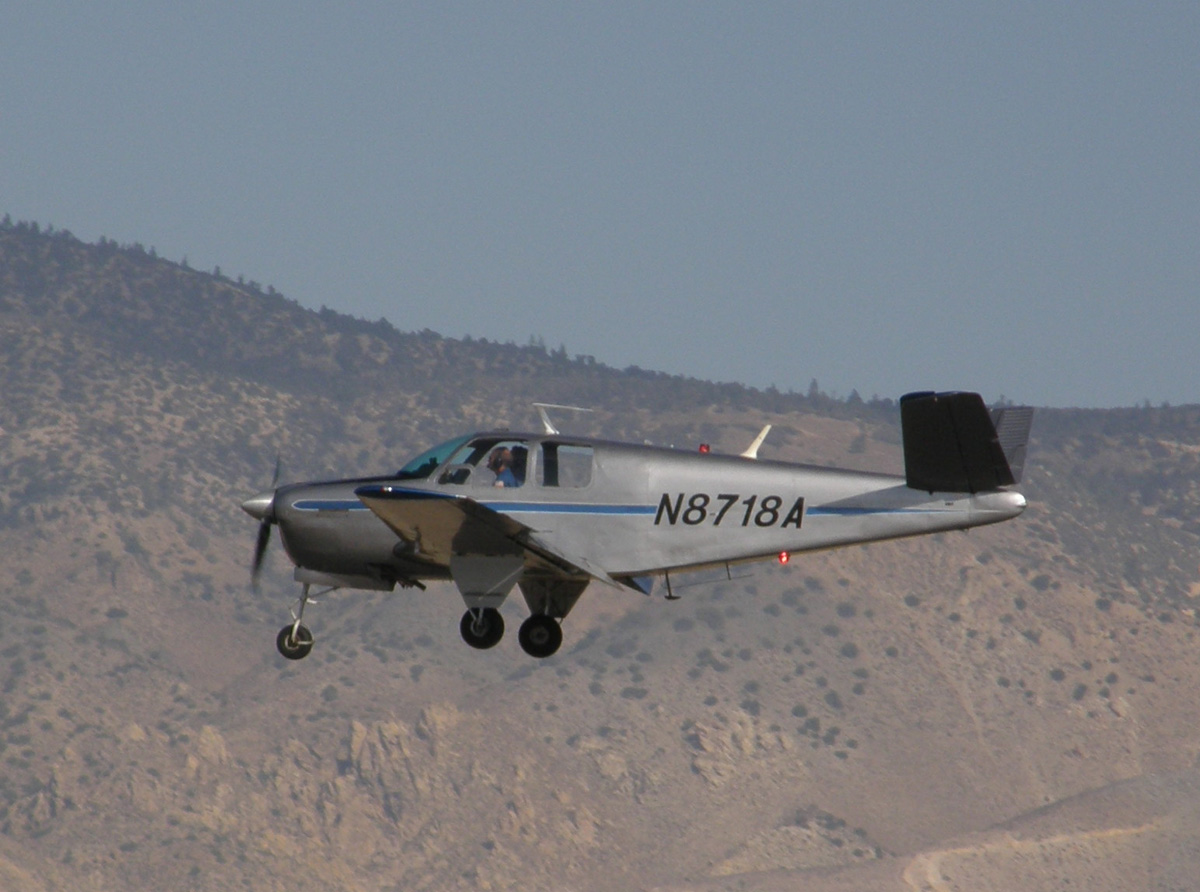|
Antonov A-11
The Antonov A-11 is a single-seat, high performance, all-metal sailplane built in the Soviet Union in the late 1950s. 150 were produced. Design and development The almost all-metal A-11 was Antonov's first non-wood framed sailplane. It is a cantilever mid-wing monoplane, with straight tapered wings mostly swept on the trailing edge and set with 1.5° of dihedral but no washout. A single spar with a metal-skinned leading edge forward of it and fabric covering aft forms most of the span but the curved tips are supported by twin spars. The fabric-covered ailerons are slotted, with set-back hinges and mass balances. They can be drooped together through 8° to act as flaps. Inboard, there are slotted flaps on the trailing edges and spoilers, mounted at mid-chord and quite close to the fuselage, of the gapless kind opening upwards only. The fuselage of the A-11 is a metal monocoque of pod and boom form, with a gradual transition between the two. It carries an all-metal ... [...More Info...] [...Related Items...] OR: [Wikipedia] [Google] [Baidu] |
WikiProject Aircraft
A WikiProject, or Wikiproject, is an affinity group for contributors with shared goals within the Wikimedia movement. WikiProjects are prevalent within the largest wiki, Wikipedia, and exist to varying degrees within Wikimedia project, sibling projects such as Wiktionary, Wikiquote, Wikidata, and Wikisource. They also exist in different languages, and translation of articles is a form of their collaboration. During the COVID-19 pandemic, CBS News noted the role of Wikipedia's WikiProject Medicine in maintaining the accuracy of articles related to the disease. Another WikiProject that has drawn attention is WikiProject Women Scientists, which was profiled by ''Smithsonian Magazine, Smithsonian'' for its efforts to improve coverage of women scientists which the profile noted had "helped increase the number of female scientists on Wikipedia from around 1,600 to over 5,000". On Wikipedia Some Wikipedia WikiProjects are substantial enough to engage in cooperative activities with outsi ... [...More Info...] [...Related Items...] OR: [Wikipedia] [Google] [Baidu] |
Spoiler (aeronautics)
In aeronautics, a spoiler (sometimes called a lift spoiler or lift dumper) is a device which increases the Drag (physics), drag and decreases the lift (force), lift of an airfoil in a controlled way. Most often, spoilers are hinged plates on the top surface of a wing that can be extended upward into the airflow to ''spoil'' the streamline flow. By so doing, the spoiler creates a controlled Stall (flight), stall over the portion of the wing behind it, greatly reducing the lift of that wing section. Spoilers differ from air brake (aeronautics), airbrakes in that airbrakes are designed to increase drag without disrupting the lift distribution across the wing span, while spoilers disrupt the lift distribution as well as increasing drag. However, flight spoilers are routinely referred to as "speed brakes" on transport aircraft by pilots and manufacturers, despite significantly reducing lift. Spoilers fall into two categories: those that are deployed at controlled angles during flig ... [...More Info...] [...Related Items...] OR: [Wikipedia] [Google] [Baidu] |
Antonov A-9
The Antonov A-9 was a single-seat sailplane designed and built in the USSR in the 1940s, a development of the record setting Red Front 7. Design and development Oleg Antonov had designed sailplanes since the early 1930s, most memorably the Red Front 7 which, flown by Olga Klepikova, set a world distance record of that stood from 1939 to 1951. The A-9 is seen as a development of that aircraft, though detailed information from this period of Soviet aviation is often limited. The fuselages and tail units of the two aircraft were very similar but the wings were quite different. The A-9 was a cantilever, shoulder wing monoplane. In plan, the wing had a short, constant chord centre section and long, straight tapered outer panels, with a sweep on both edges, terminating in rounded and downward-curled wingtips. The panels were demountable from the centre section for transport; unusually, the centre section was an integral part of the fuselage structure, its single box spar spa ... [...More Info...] [...Related Items...] OR: [Wikipedia] [Google] [Baidu] |
Panevėžys
Panevėžys () is the fifth-largest List of cities in Lithuania, city in Lithuania and the List of cities in the Baltic states by population, eighth-most-populous city in the Baltic States. it occupies with 89,100 inhabitants. As defined by Eurostat the population of the Panevėžys functional urban area that stretches beyond the city limits is estimated at 124,412 (as of 2022). The largest multifunctional arena in Panevėžys, Kalnapilio Arena, formerly known as Cido Arena, hosted the Eurobasket 2011 group matches. Panevėžys is an important cultural and economic hub in the country's northeast. Located on the banks of the Nevėžis River, the city is known for its strong industrial heritage and vibrant arts scene. Panevėžys is also considered as a gateway to the picturesque landscapes of the Aukštaitija region. The city is still known in the Jewish world for the eponymous Ponevezh Yeshiva. Name The name of the city is derived from the Lithuanian language, Lithuanian hyd ... [...More Info...] [...Related Items...] OR: [Wikipedia] [Google] [Baidu] |
Monino
Monino () is an urban locality (a work settlement) in Shchyolkovsky District of Moscow Oblast, Russia, located east of Moscow. Population: History Monino was founded in the Muninskaya Wasteland () on August 23, 1792. The name "Monino" or "Munin" can be translated from the Finno-Ugric languages as "My farm". It is alleged that the history of the settlement can be traced to a small farm, whose owner was a man of Monin. In 1926, an airfield for heavy aircraft was built, becoming the first to house a heavy bomber brigade. The subsequent history of the village is closely connected with aviation. The status of urban-type settlement was conferred in 1946. Until 1965, it was part of the Noginsk District. Trivia The Central Air Force Museum in Monino is one of the world's largest aviation museums, and the largest for Russian aircraft. 173 aircraft and 127 aircraft engines are on display, and the museum also features collections of weapons, instruments, uniforms, artwork ... [...More Info...] [...Related Items...] OR: [Wikipedia] [Google] [Baidu] |
Instrument Flight Rules
In aviation, instrument flight rules (IFR) is one of two sets of regulations governing all aspects of civil aviation aircraft operations; the other is visual flight rules (VFR). The U.S. Federal Aviation Administration's (FAA) ''Instrument Flying Handbook'' defines IFR as: "Rules and regulations established by the FAA to govern flight under conditions in which flight by outside visual reference is not safe. IFR flight depends upon flying by reference to instruments in the flight deck, and navigation is accomplished by reference to electronic signals." It is also a term used by pilots and controllers to indicate the type of flight plan an aircraft is flying, such as an IFR or VFR flight plan. Basic information Comparison to visual flight rules It is possible and fairly straightforward, in relatively clear weather conditions, to fly an aircraft solely by reference to outside visual cues, such as the horizon to maintain orientation, nearby buildings and terrain features for ... [...More Info...] [...Related Items...] OR: [Wikipedia] [Google] [Baidu] |
Spin (flight)
In flight dynamics a spin is a special category of stall resulting in autorotation (uncommanded roll) about the aircraft's longitudinal axis and a shallow, rotating, downward path approximately centred on a vertical axis. Spins can be entered intentionally or unintentionally, from any flight attitude if the aircraft has sufficient yaw while at the stall point. In a normal spin, the wing on the inside of the turn stalls while the outside wing remains flying. It is possible for both wings to stall, but the angle of attack of each wing, and consequently its lift and drag, are different. Either situation causes the aircraft to autorotate toward the stalled wing due to its higher drag and loss of lift. Spins are characterized by high angle of attack, an airspeed below the stall on at least one wing and a shallow descent. Recovery and avoiding a crash may require a specific and counter-intuitive set of actions. A spin differs from a spiral dive, in which neither wing is stalled ... [...More Info...] [...Related Items...] OR: [Wikipedia] [Google] [Baidu] |
Aerobatics
Aerobatics is the practice of flying maneuvers involving aircraft attitudes that are not used in conventional passenger-carrying flights. The term is a portmanteau of "aeroplane" and "acrobatics". Aerobatics are performed in aeroplanes and gliders for training, recreation, entertainment, and sport. Additionally, some helicopters, such as the MBB Bo 105, are capable of limited aerobatic manoeuvres. An example of a fully aerobatic helicopter, capable of performing loops and rolls, is the Westland Lynx. Most aerobatic manoeuvres involve rotation of the aircraft about its longitudinal (roll) axis or lateral (pitch) axis. Other maneuvers, such as a spin, displace the aircraft about its vertical (yaw) axis. Manoeuvres are often combined to form a complete aerobatic sequence for entertainment or competition. Aerobatic flying requires a broader set of piloting skills and exposes the aircraft to greater structural stress than for normal flight. In some countries, the pilot must wea ... [...More Info...] [...Related Items...] OR: [Wikipedia] [Google] [Baidu] |
Ventral
Standard anatomical terms of location are used to describe unambiguously the anatomy of humans and other animals. The terms, typically derived from Latin or Greek roots, describe something in its standard anatomical position. This position provides a definition of what is at the front ("anterior"), behind ("posterior") and so on. As part of defining and describing terms, the body is described through the use of anatomical planes and axes. The meaning of terms that are used can change depending on whether a vertebrate is a biped or a quadruped, due to the difference in the neuraxis, or if an invertebrate is a non-bilaterian. A non-bilaterian has no anterior or posterior surface for example but can still have a descriptor used such as proximal or distal in relation to a body part that is nearest to, or furthest from its middle. International organisations have determined vocabularies that are often used as standards for subdisciplines of anatomy. For example, '' Terminolog ... [...More Info...] [...Related Items...] OR: [Wikipedia] [Google] [Baidu] |
Landing Gear
Landing gear is the undercarriage of an aircraft or spacecraft that is used for taxiing, takeoff or landing. For aircraft, it is generally needed for all three of these. It was also formerly called ''alighting gear'' by some manufacturers, such as the Glenn L. Martin Company. For aircraft, Stinton makes the terminology distinction ''undercarriage (British) = landing gear (US)''. For aircraft, the landing gear supports the craft when it is not flying, allowing it to take off, land, and taxi without damage. Wheeled landing gear is the most common, with skis or Seaplane, floats needed to operate from snow/ice/water and skids for vertical operation on land. Retractable undercarriages fold away during flight, which reduces drag (physics), drag, allowing for faster airspeeds. Landing gear must be strong enough to support the aircraft and its design affects the weight, balance and performance. It often comprises three wheels, or wheel-sets, giving a tripod effect. Some unusual land ... [...More Info...] [...Related Items...] OR: [Wikipedia] [Google] [Baidu] |
Canopy (aircraft)
An aircraft canopy is the transparent enclosure over the cockpit of some types of aircraft. An aircraft canopy provides a controlled and sometimes Cabin pressurization, pressurized environment for the aircraft's occupants, and allows for a greater field of view over a traditional flight deck. A canopy's shape is a compromise designed to minimize aerodynamic drag, while maximizing visibility for Aircraft pilot, pilots and other crewmembers. History Very early aircraft had no canopies. The pilots were exposed to the wind and weather, although most flying was done in good weather. Through World War I most aircraft had no canopy, although they often had a small windshield to deflect the prop wash and wind from hitting the pilot in the face. In the 1920s and 1930s, the increasing speed and altitude of airplanes necessitated a fully enclosed cockpit and canopies became more common. Early canopies were made of numerous pieces of flat glass held in position by a frame and muntins. ... [...More Info...] [...Related Items...] OR: [Wikipedia] [Google] [Baidu] |
V-tail
The V-tail or ''vee-tail'' (sometimes called a butterfly tail or Rudlicki's V-tailGudmundsson S. (2013). "General Aviation Aircraft Design: Applied Methods and Procedures" (Reprint). Butterworth-Heinemann. p. 489. , 9780123973290) of an aircraft is an unconventional arrangement of the tail control surfaces that replaces the traditional vertical and horizontal surfaces with two surfaces set in a V-shaped configuration. It is not widely used in aircraft design. The aft edge of each twin surface is a hinged control surface called a ruddervator, which combines the functions of both a Rudder#Aircraft rudders, rudder and Elevator (aeronautics), elevator. History The V-tail was invented in 1930 by Polish engineer Jerzy Rudlicki and was tested for the first time on a Hanriot HD.28 trainer, modified by Poland, Polish aerospace manufacturer Plage i Laśkiewicz, Plage and Laśkiewicz in the summer of 1931. Variants The X-shaped tail surfaces of the experimental Lockheed XFV were essential ... [...More Info...] [...Related Items...] OR: [Wikipedia] [Google] [Baidu] |






